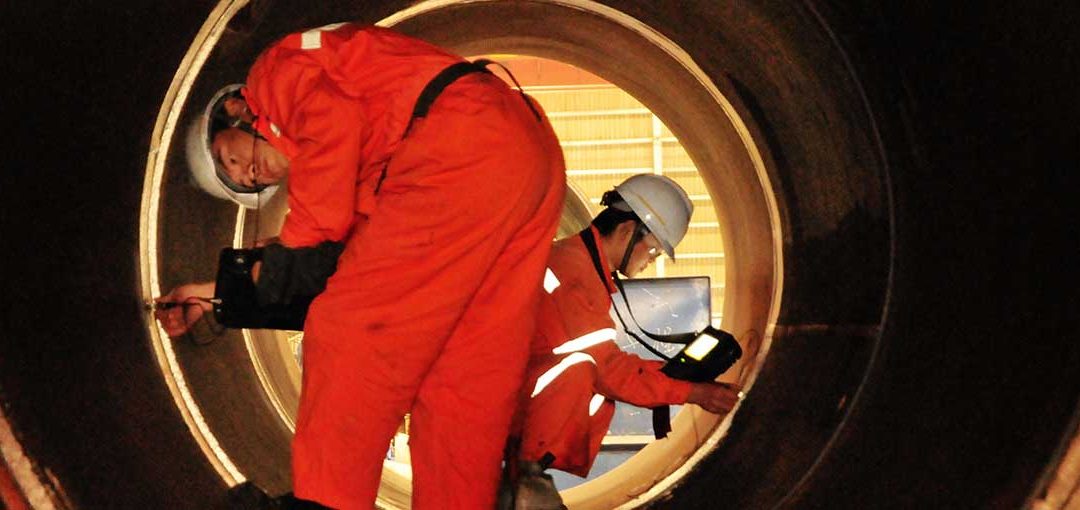Ensure The Safety Of Your Workers During Confined Space Entry
Ensure The Safety Of Your Workers During Confined Space Entry
August 28, 2023 |
Confined space entry is a specialized operation that requires exceptional attention to safety. This area has limited ways to get in and out, the air might be dangerous, and it’s not made for workers to stay there all the time.
Confined space entry inherently unfurls a variety of safety risks. To enhance safety and reduce risks, it is important to:
- Implement a strong and clear safety protocol.
- Educate and train employees.
- Equip them with appropriate protective gear.
- Encourage open communication.
- Conduct regular safety drills.
Taking care of your employees is important. It also helps them work better. When workers are safe, they can work more efficiently. Making sure the workplace is safe is everyone’s job, not just the managers.
What is Confined Space Entry?
Confined space entry is when a worker goes into a small, restricted area to do tasks with limited access. These could be tanks, storage bins, vaults, pits, or any other enclosed space not for regular use. This environment can be dangerous for workers due to various hazards, including lack of oxygen, toxic gases, or the presence of liquid or solid materials that could engulf them.
Understanding the Hazards
Confined spaces can have hidden dangers. These dangers can be different. The first danger is not having enough oxygen, which can cause suffocation. The second danger is being exposed to harmful substances, which can make you very sick. You can also get hurt from falling or touching equipment. If there are things that can catch fire, there is a big chance of a fire or explosion.
Planning and Preparation
To work safely in these environments, it’s important to prepare for unexpected situations. Before starting tasks, a systematic process should be used to assess risks and evaluate hazards. All hazards must be identified and managed effectively. Regularly maintaining and inspecting equipment, and properly training personnel, can prevent accidents and keep workers safe.
Personal Protective Equipment (PPE)
Giving workers necessary personal protective equipment (PPE) can greatly reduce the dangers of entering confined spaces. If the air is toxic or lacks oxygen, you need to wear respiratory protective equipment. PPE needs regular inspections to ensure it stays in good condition.
Emergency Preparation
Emergencies can occur during confined space entry, even with careful planning. Thus, a reliable and comprehensive emergency response plan should be crafted.
Training and Education
Training is an important part of safety protocol. Workers must learn about the dangers of their job and how to react in emergencies. Training improves problem-solving and helps people stay calm in dangerous situations.
Monitoring the Confined Space
Continual observation during confined space entry is indispensable to maintaining safety standards. It offers a way to identify and fix possible problems before they become serious threats. Ensure the work follows safety protocols by having a capable supervisor oversee it.
Legal Requirements and Regulations
Companies in limited spaces need to follow the laws and regulations that apply to their location. Many countries require employers to find dangers at work, follow safety rules, and train employees. To ensure worker safety and protect the company legally, it is important to follow these legal requirements.
The Role of Safety Leadership
Leadership is invaluable in instilling a culture of safety in any workplace. Effective leaders can create a strong safety culture. This culture emphasizes the shared responsibility of workers and management to stay safe during confined space entry. A safety leader has various responsibilities. These include holding safety meetings, reinforcing proper protocols, and encouraging a proactive attitude to prevent accidents. Safety is more than just checking off lists. It’s about making sure everyone has a safety mindset.
Empower Workers to Speak Up
Workers are often the first to spot potential safety risks. They should feel encouraged to share any concerns or suggestions regarding safer procedures and practices for confined space entry. Having a culture where workers can freely identify potential hazards and not worry about retaliation is crucial for promoting safety improvements.
Regular Safety Drills
Regular safety drills help workers apply theoretical safety measures in a practical way. Drills can improve team preparedness for emergencies, ensuring a quick and capable response from all members. A proactive mindset helps detect and fix potential problems before they become serious.
Leverage Technology for Safety
Modern technology has made it possible to improve safety when entering confined spaces. Wearable devices can track bears’ health in real-time, while sensors alert teams to dangerous atmospheres. Technology can enhance traditional safety measures for a stronger safety strategy.
